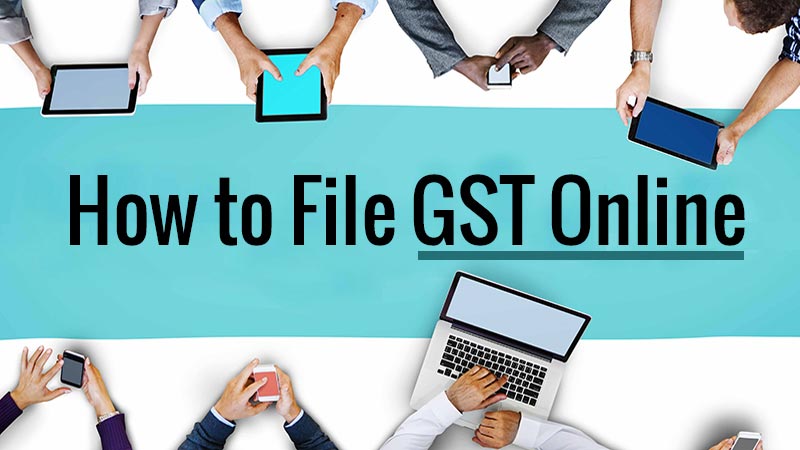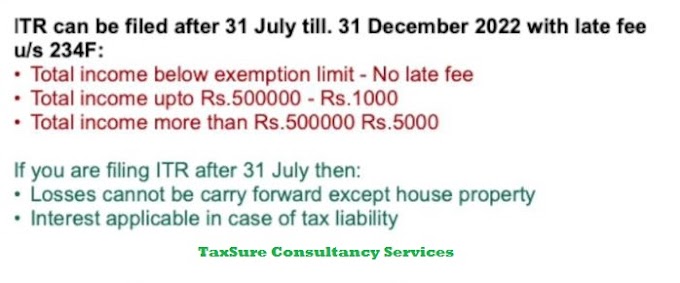India’s biggest tax reform has taken place by the introduction of GST. With the idea of ‘One Nation One Tax,’ the tax is warmly welcomed by the majority. A simplified process introduced collaborating all the information of the sellers or buyers of goods and services. The GSTN (goods and service tax network) system where all the information regarding invoices, selling, buying, location, and date is furnished is established by GST council and finance ministry. To collect the information from taxpayers and keep them in synchronous are important aspects of the smooth flow of interconnected network. So GST returns are the forms every taxpayer need to comply with for easy flow of input tax credit. To make online GST return filing easy, we have divided each and every GSTR form according to the liable taxpayer category.
What is GST Return?
Goods and services tax is an indirect tax applicable from July 1st, 2017 across India. Under the GST return, the taxpayers running their firms and business across India, whether it is interstate or intrastate, they are liable to file for GST return as prescribed by the GST council and indirect tax department. GST return is the filing of taxes through GSTR forms according to the slabs and eligibility criteria.
Who Should File GST Returns?
GST returns must be filed by every business units whose turnover exceeds 20 lakh annually. Taxpayers are also supposed to go through various eligibility criteria for different slabs.
What are the Types of GST Returns?
There are 11 types of GST returns drafted for different category of taxpayers and business units: Click here for GST Return Types
Regular TaxpayersFind Your Category as a Taxpayer for GST Return Filing Guide
- Composition Taxpayers
- Non-resident Taxpayer
- Input Service Distributor
- Tax Deduction At Source
- Tax Collected At Source (E-commerce Operators)
- Annual Return For Taxpayers
- Final Return (In Case Of Cancellation Of Business Registration)
- Unique Identification Number Holders
Note:
- GSTR-9 has to file by all taxpayers within the end of next financial year as an annual return filing and GSTR-10 is to be filed by the closure business entity for the settlement of full and final tax dues
- GSTR-3B form was also introduced for the first two months (July & August) of filing of taxes in order to fetch the consolidated data instead of detailed tax data
Who is a Regular Taxpayer?
Regular taxpayers under GST are the persons who own a business in a state/UT and involve the supply of goods and services. Currently, there are two forms which are to be filed by the regular taxpayer i.e. GSTR-1 and GSTR-3B in which GSTR-1 account for outward supplies & GSTR-3B is for Summarized details of outward supplies & inward supplies plus the payment of an amount of tax data to be the file on or before 20th of the succeeding month.
GSTR-1: This is the first return form every taxpayer is required to furnish between 1st and 10th of the succeeding month for a given tax period. The GSTR-1 form is documented with outward supplies made by the taxpayers. The GSTR-1 contains 13 heads under it and is important as it helps in credit matching and future flow of the tax credit. According to the latest announcement from the GST council, the taxpayers with turnover less than 1.5 crores have to file GSTR-1 quarterly while the taxpayers with turnover more than 1.5 crores have to file monthly returns.
GSTR-2 (Not Available on the Portal): The GSTR-2 form accumulates all the information of inward supplies to the buyer and recipient of goods and services furnishes this information. The GSTR-2 is filed by every taxpayer before 15th of the succeeding month for a given tax period. There are 13 heads to fill carefully under GSTR-2 because the information will reflect in the seller forms and the information should be matching with the information provided by the seller.
GSTR-3 (Not Available on the Portal): It culminates the information provided in GSTR-1 and GSTR-2 as it is the form accumulating all the details of sales and purchases made in particular month. GSTR-3 has 15 heads to furnish with the information regarding inward and outward supplies. The GSTR-3 is needed to file before 20th of the succeeding month for a given tax period. By filing GSTR-3 the taxpayer gets the information about provided input tax credit and payable tax amount.
GSTR 3B: It consists of Summarized details of outward supplies & inward supplies plus the payment of an amount of tax data to be the file on or before 20th of the succeeding month. By filing GSTR-3B the taxpayer gets the information about provided input tax credit and payable tax amount.
Who is a Composition Taxpayer?
To provide relief to the small and medium enterprises the government has come up with composition scheme where registered business under composition scheme needs to file one return (GSTR-4) in a quarter instead of 3 returns in a month like normal businesses. There is a criterion of registering under the scheme i.e. the turnover of registering businesses should not be more than INR 1 CRORE.
GSTR-4: It is for the composition vendors (who are registered under composition scheme). The form is furnished every 3rd month of the ending quarter and before 18th of the succeeding month of a given quarter. Taxpayer files the information of sales and purchases made in a quarter and tax paid under composition scheme.
Who is a Non-resident Taxpayer?
The Non-resident taxpayer under GST regime is the person/business not owning the business in India but supplying goods and services to the country for a short period of time. All these non-resident taxpayers will have to file their tax returns through the GSTR-5 form.
GSTR-5: The information in GSTR-5 is furnished by a non-resident taxpayer for the purchases and sales they made in India whether online or offline. GSTR-5 also avails the detailing about the available tax credit, tax paid and remaining stocks for the NRI. The form is needed to be furnished by the non-resident taxpayer before 20th of the succeeding month for a given tax period.
GSTR 5A GST For Non-Resident OIDAR Service Providers
Non-resident OIDAR service providers are required to file GSTR 5A. All the business which uses the internet as a medium to carry their business operations comes under the OIDAR services category. This type of businesses have to file GSTR 5A and are required to file the tax return on par with other business units. The due date for filing GSTR 5A is 20th of every succeeding month. It is mandatory for GSTR 5A registered to file the tax return and to get their GSTIN.
Who is Input Service Distributor?
Input service distributor is an office of the supplier of goods and/or services which receives tax invoices issued by other suppliers towards receipt of input services and/or goods and issues a prescribed document for the purposes of distributing the credit of GST to its units. The input tax distributors have to select GSTR-6 for their GST filing.
GSTR-6: The GSTR-6 is filed by ISD on every 13th of the next month for a given tax period. It includes all the information regarding inward supplies made to the registered taxpayer. It also contains the information of input tax credit which is distributed among the organizations under ISD.
Who is a TDS Taxpayer?
TDS taxpayers are persons/authorities eligible to deduct TDS on payment made to registered vendors or businesses towards purchases made from them. Every TDS taxpayer has to file their taxes through the GSTR-7 form.
GSTR-7: Every tax deductor should file the GSTR-7 form on 10th of the succeeding month for a given tax period. It covers all the details of TDS made under IGST, CGST, and SGST along with the supplier information and details of the source where tax deducted.
Who is a TCS Taxpayer (E-commerce Operator)?
E-commerce operators are online business operator registered under Model GST law and provide the platform for vendors and customers for the supply of goods and services. For TCS taxes, they should file the GSTR-8 form on Indian government GST portal.
GSTR-8: The form details are furnished by e-commerce operator for the tax collected at source information. The e-commerce operators are registered under GST regime for tax collection at source. It has to be filed by every e-commerce operator before 10th of the next month for a given tax period. It is required to file all the details of supplies made to registered or unregistered person through e-commerce portal along with tax paid and payable information.
For Annual Return- GSTR-9
GSTR-9: This covers the information of annual tax paid under GST by the taxpayer. GSTR-9 is an accumulation of all the tax paid so it is filed before 31st December of the next financial year related to given tax period. It contains the information of GSTR-3 filed for all 12 months. For filing GSTR-9 taxpayer must be having the information of inward or outward supplies, tax paid under various heads as under CGST, IGST, and SGST, and total turnover with audit details.
For Final Return(If Registration Of Business Has Cancelled)- GSTR-10
GSTR-10: It is furnished by the registered taxpayer in a particular situation such as cancellation or surrender of GST registration. The reason for the GST cancellation can be anything like the closing of business voluntarily or by the government order. The taxpayer is needed to file the final return form within 3-months of cancellation order with the details of tax paid, payable, and input tax credit information.
Who is a UIN Holder?
UIN holders own a unique number assigned by GST Council and the UIN status is given for specialized agencies of UNO or organization registered under UN act 1947, multilateral financial institutions, and the person who is granted the status of UIN on commissioner’s consent.
GSTR-11: The GSTR-11 is furnished by UIN holders (registered under GST regime and having Unique identification number) when they purchase products during the month. By filing GSTR-11 for inward supplies made by UIN holders, they get the refund for the taxes they paid on purchases made in India. UIN holders file the GSTR-11 before 28th of the succeeding month for a given tax period.
Government Comments Over Credit Money Procedure
The government assured the taxpayers that they will get their refunds or credits on time and denied the claims which stated that GST council has more than 1,000 Crore rupees to pay to traders as refund claims or input credits. Finance ministry has clarified the statement with the fact that 66% people have chosen duty drawback scheme that means 33% people’s refunds cannot be pending. The payoff procedure of refunds under VAT and excise duty will start just after filing GSTR-1 form.
The Last Date For TRAN-1 Announced
The last date of filing form TRAN-1 (which is filed by the taxpayers for the refund claims under previous tax regime) is the 10th day of May 2018. Late fees from October 2017 to April 2018 for GSTR-3B can be waived only if the registered person who submitted the FORM GST TRAN-1 but not filed on the common portal on or before the 27th day of December 2017.
Provided further that such registered persons have filed the declaration in FORM GST TRAN-1 on or before the 10th day of May 2018 and the return in FORM GSTR-3B for each of such months, on or before the 31st day of May 2018.
For Annual Return- GSTR-9
GSTR-9: This covers the information of annual tax paid under GST by the taxpayer. GSTR-9 is an accumulation of all the tax paid so it is filed before 31st December of the next financial year related to given tax period. It contains the information of GSTR-3 filed for all 12 months. For filing GSTR-9 taxpayer must be having the information of inward or outward supplies, tax paid under various heads as under CGST, IGST, and SGST, and total turnover with audit details.
For Final Return(If Registration Of Business Has Cancelled)- GSTR-10
GSTR-10: It is furnished by the registered taxpayer in a particular situation such as cancellation or surrender of GST registration. The reason for the GST cancellation can be anything like the closing of business voluntarily or by the government order. The taxpayer is needed to file the final return form within 3-months of cancellation order with the details of tax paid, payable, and input tax credit information.
Who is a UIN Holder?
UIN holders own a unique number assigned by GST Council and the UIN status is given for specialized agencies of UNO or organization registered under UN act 1947, multilateral financial institutions, and the person who is granted the status of UIN on commissioner’s consent.
GSTR-11: The GSTR-11 is furnished by UIN holders (registered under GST regime and having Unique identification number) when they purchase products during the month. By filing GSTR-11 for inward supplies made by UIN holders, they get the refund for the taxes they paid on purchases made in India. UIN holders file the GSTR-11 before 28th of the succeeding month for a given tax period.
Government Comments Over Credit Money Procedure
The government assured the taxpayers that they will get their refunds or credits on time and denied the claims which stated that GST council has more than 1,000 Crore rupees to pay to traders as refund claims or input credits. Finance ministry has clarified the statement with the fact that 66% people have chosen duty drawback scheme that means 33% people’s refunds cannot be pending. The payoff procedure of refunds under VAT and excise duty will start just after filing GSTR-1 form.
The Last Date For TRAN-1 Announced
The last date of filing form TRAN-1 (which is filed by the taxpayers for the refund claims under previous tax regime) is the 10th day of May 2018. Late fees from October 2017 to April 2018 for GSTR-3B can be waived only if the registered person who submitted the FORM GST TRAN-1 but not filed on the common portal on or before the 27th day of December 2017.
Provided further that such registered persons have filed the declaration in FORM GST TRAN-1 on or before the 10th day of May 2018 and the return in FORM GSTR-3B for each of such months, on or before the 31st day of May 2018.





0 Comments